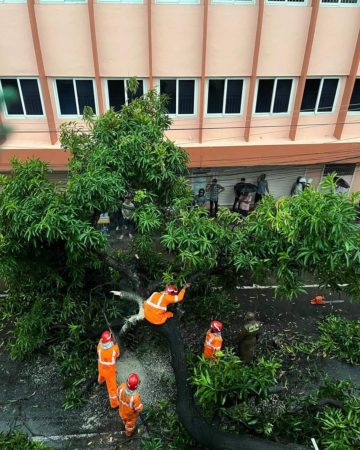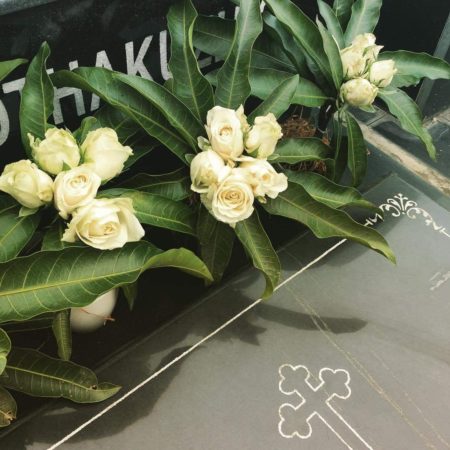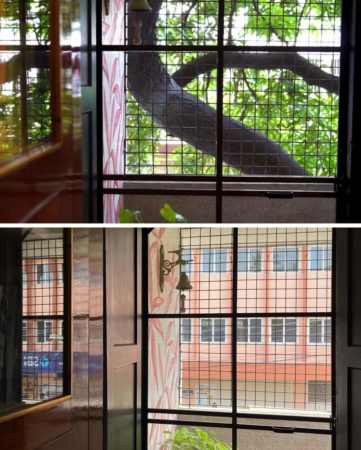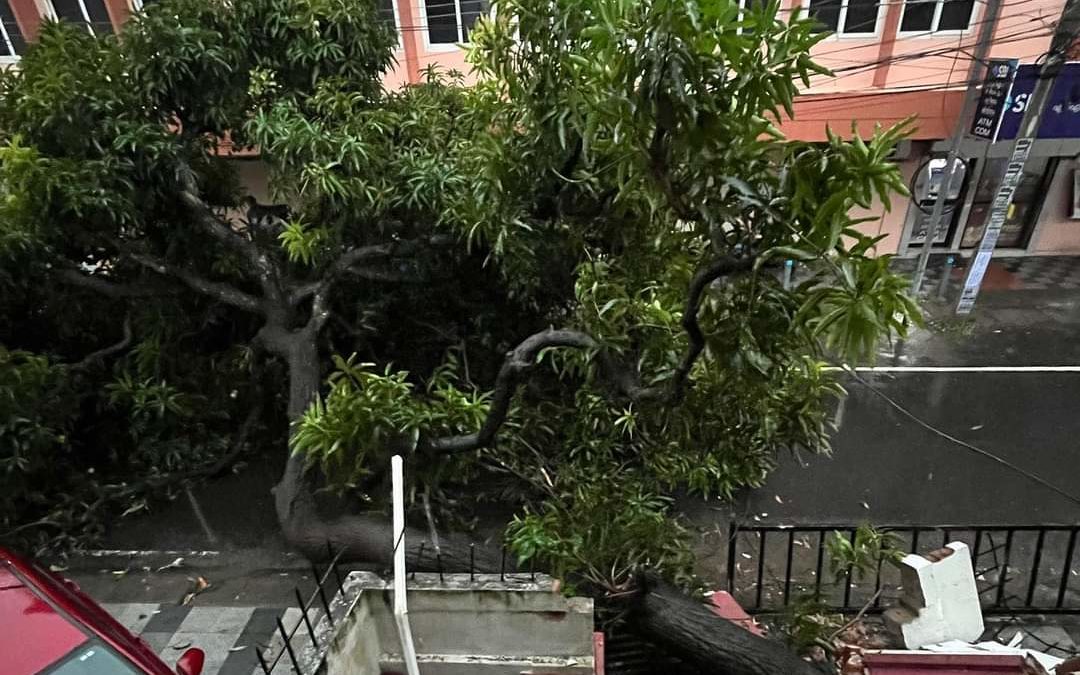Today it will be 16 days since our mango tree fell. If she had been a human, we would have gathered to reminisce about her life, offered prayers for her soul and feasted in celebration of all that she stood for but trees don’t have funerals or memorial services. They just leave a huge void where they once stood towering over two-storied homes and ceasing to exist except in our memories. When they live their lives, they are not constantly in our thoughts and yet they exist in our physical space- the presence we take for granted- till one day it exists no more. My grandmother’s mango tree had towered over my childhood home for as long as I could remember. I spent my toddler years playing in the mud sheltered from the scorching south Indian summer sun – safe under its cool shade. When I took to documenting plants around me, I missed including even a single picture of this tree because it was a constant that needed no reminder.

As children, my cousins and I would perch under the cool branches of this tree precariously balanced on a sunshade as our legs swung to and fro while we watched our grandfather prune the tree lest its branches touch a live overhead electric wire or deviate from the shape that he had in his mind for the tree to conform to. My grandfather was also the designated plucker of mangoes when the tree bore them in plenty – and much to my grandmother’s dismay he would invariably end up plucking even ones that were not yet mature enough to ripen. She would mutter under her breath that he did not know how to look for the right stage of ripening and since she could not teach him, she made amends by teaching her grandchildren instead- look at the njettu, the stalk of the mango she would say each time, it should have caved in and when you can see that the mango is mature, only then pluck it for it won’t ripen otherwise. We would nod solemnly but, in our hearts, we were happier for having plucked those mangoes which could be eaten raw with some salt and a pinch of chilly and a drop of coconut oil. Ammachi (my grandmother) would grind the raw mangoes into a chammanthy on her Ammi kallu (stone grinder) and we would clamour to have a go at making it ourselves- using the small coconut leaf scrapper to gather together even the tiniest bit. She had a rule for how mangoes were to be cut too. They were to be cut into 5 pieces- the two good big pieces, the two smaller side pieces and the last slice closer to the stone which she called the kothi poolu (literally the piece you ate out of greed for mangoes).

After my grandparents passed away the mango trees lived on to remind us of a childhood spent happily with grandparents. My brother lived in the house by the mango trees and my nephew and my son spent happy summer evenings under the branches of the mango tree jostling with ants over who got to eat mangoes. The tree offered its leaves to form bouquets for my grandparents’ memorial days, willingly offered branches to the many birds who nested on it, and its fruit to the civet cat which roamed at night, it made for a perfect backdrop for my brother’s fashion photo-shoots for his brand and offered shade and texture to my sister-in-law’s home office balcony.
In my mind, the mango trees belonged to my grandmother although it was my grandfather who took care of them after her passing. It was she who had planted them in her tiny plot right in the middle of the city – a daring act given how small an area it was and how big the trees had grown to be. They were like her too- always giving away fruit to everyone who passed by. “Giving everything and taking nothing”, my brother would point out. Always considerate of the many squirrels, birds and ants that lived on and near the tree and even the people who were glad of its shade while waiting for a bus on the road adjacent to it or the auto drivers who had their eyes permanently on the fruit lest one roll down while they were parked near it – the tree chose to come crashing down in the rain without harming any other life but its own. It left behind a mangled wall and a void in our hearts and home.
Photo credits : Anoodha Kunnath (@anoodha_kunnath)
About the author: Sarika Jeevan is a nature lover, writer and baker based in Kochi, Kerala. She jots her observations on plants and nature around her on her Instagram page –





